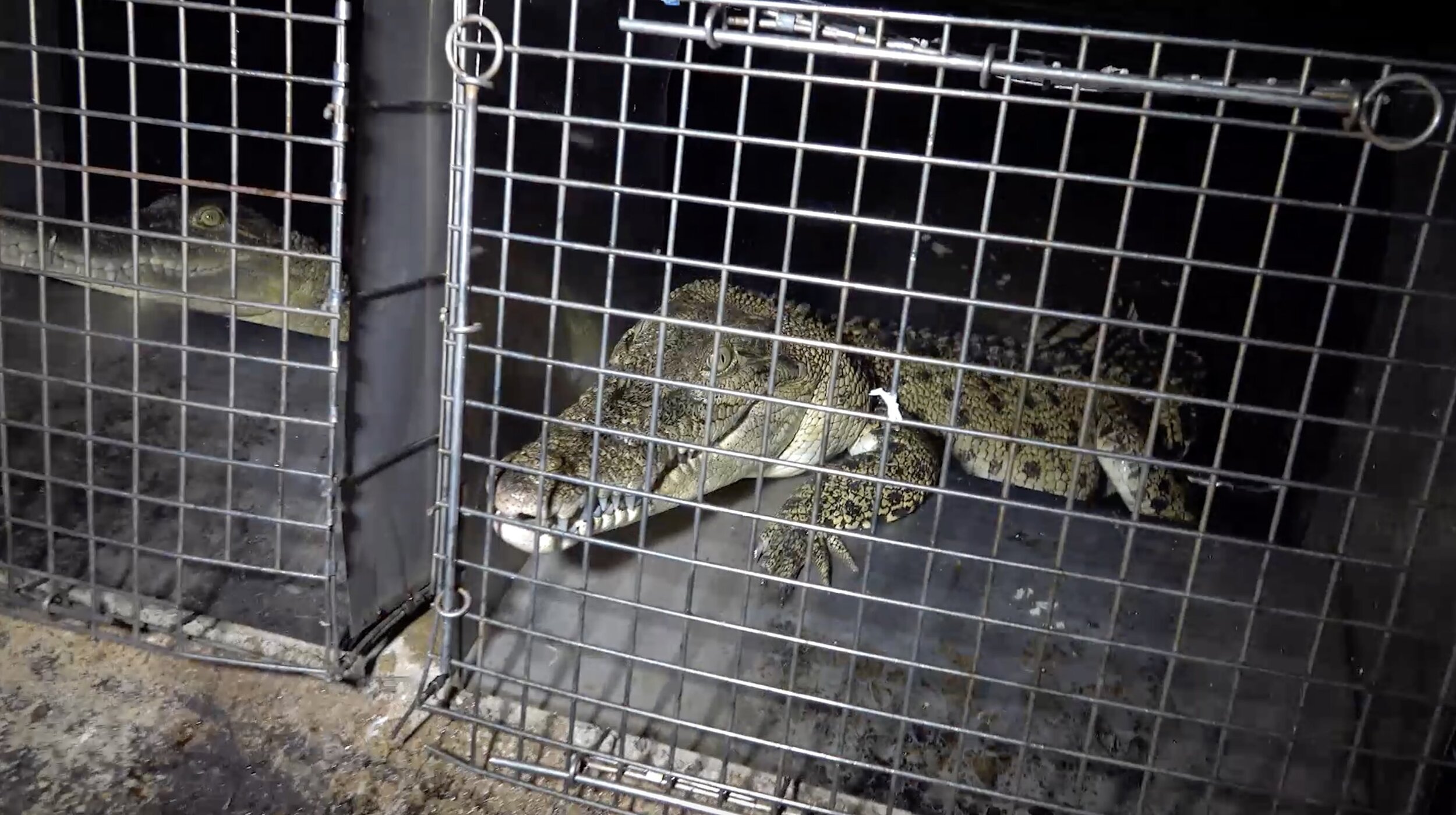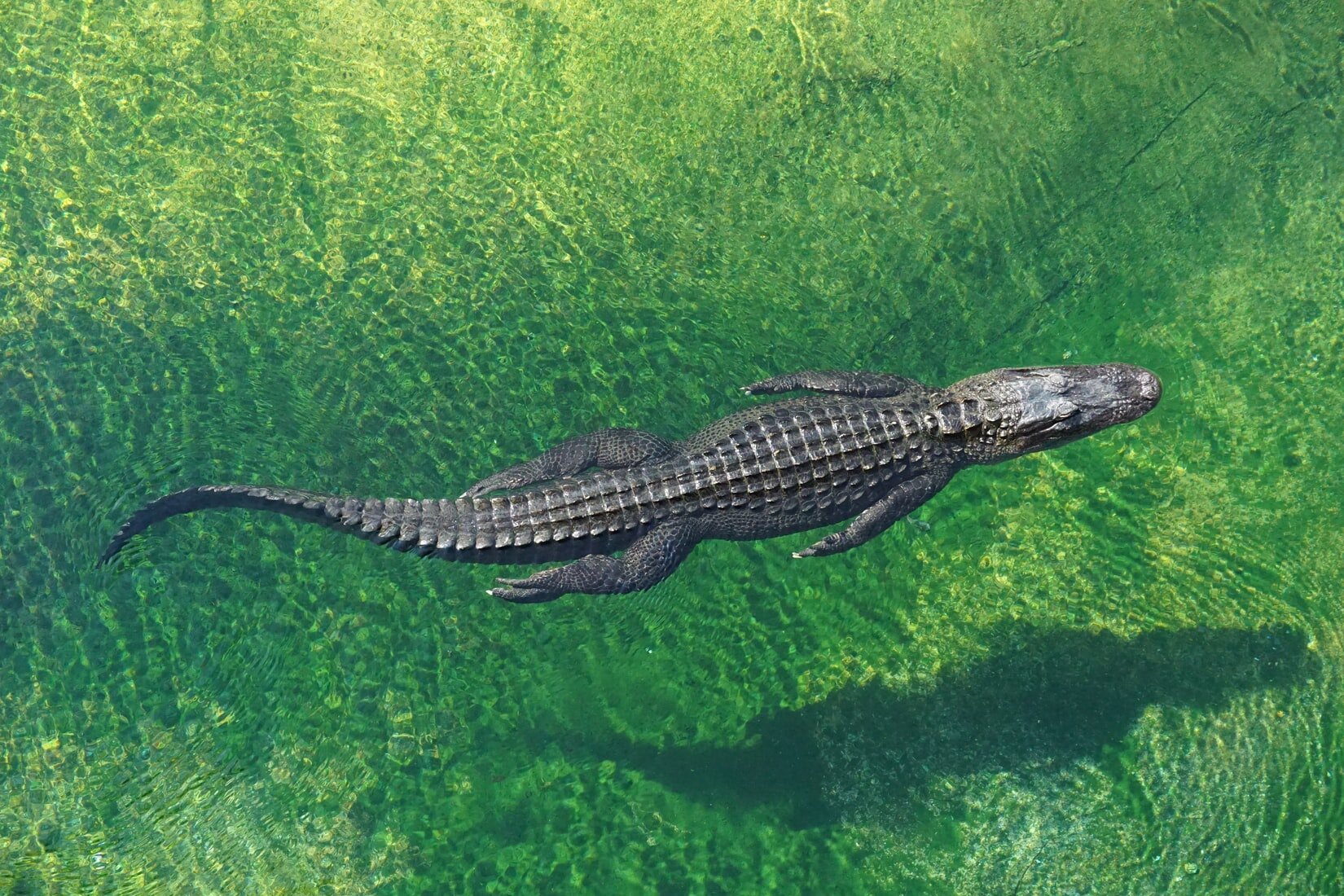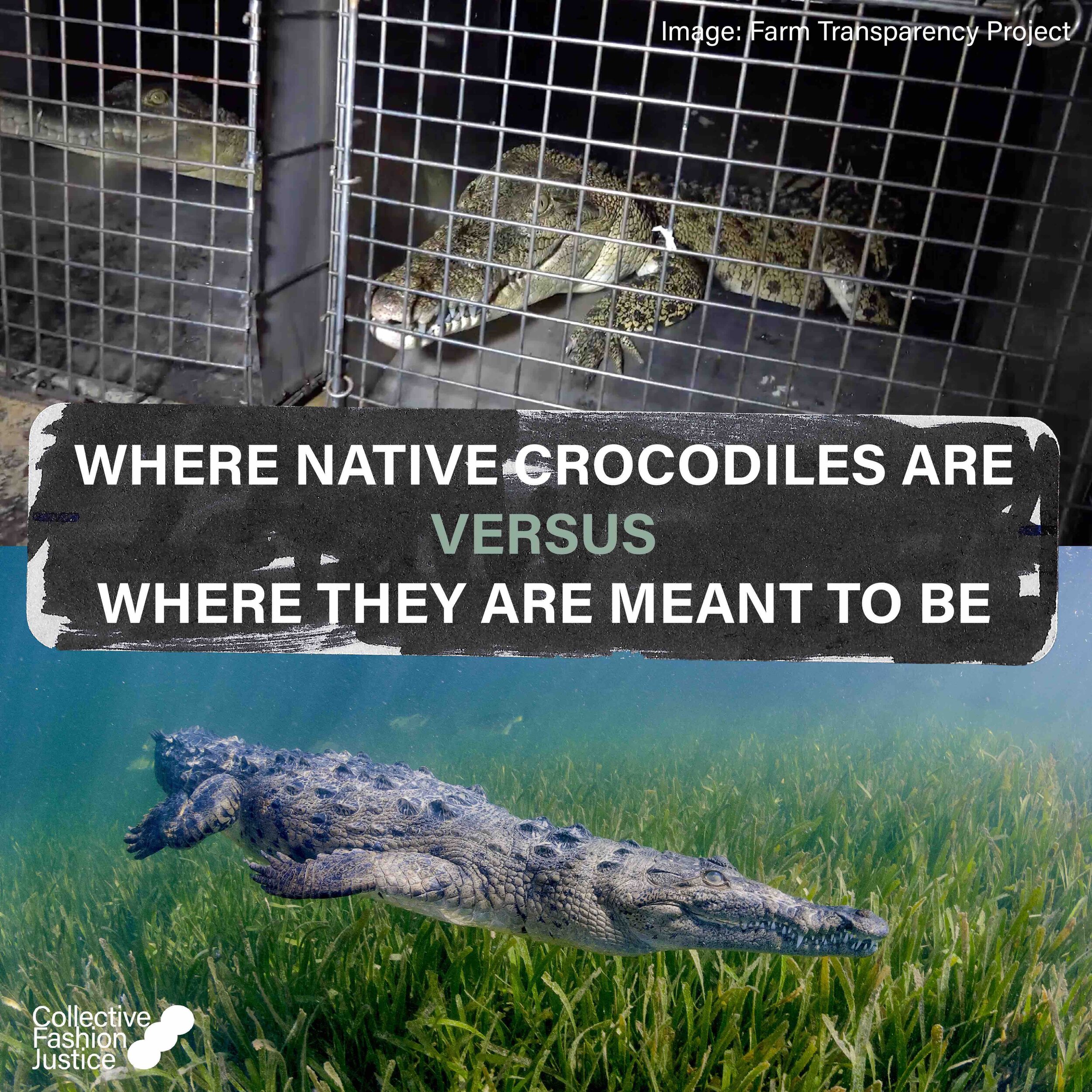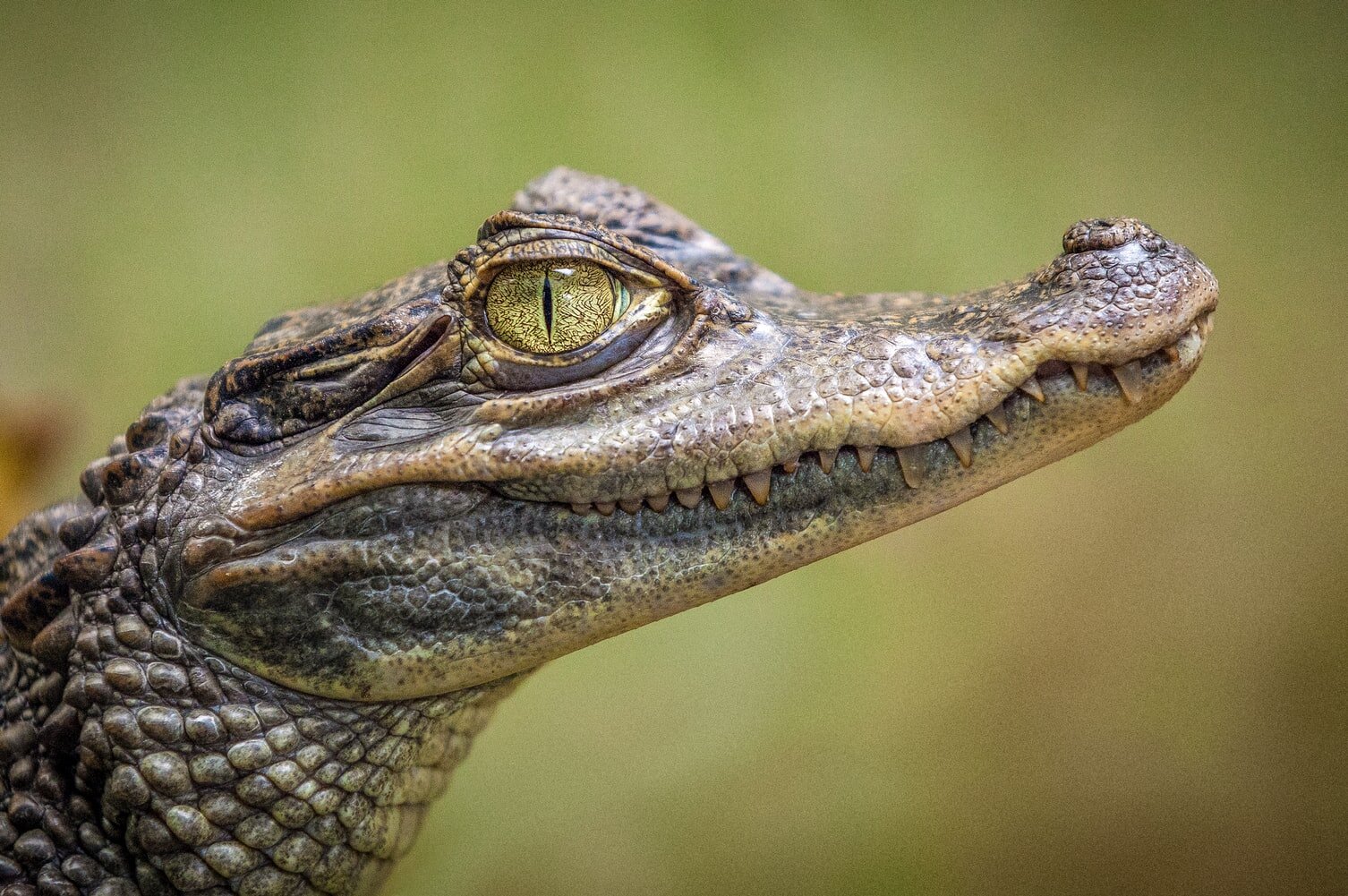The Australian crocodile skin industry’s practices are being reviewed by the Government
The Australian Federal Government is reviewing the Code of Practice on the ‘Humane Treatment of Wild and Farmed Australian Crocodiles’, which is the Code regulating the Australian industry selling skins to the likes of Hermès and Louis Vuitton.
If you want to help crocodiles exploited for fashion, you can make a submission to this review, using our guidance below.
A native saltwater crocodile confined on an Australian factory-farm for the fashion industry.
Credit: Farm Transparency Project
What should a submission include?
The Code of Practice outlines the ‘minimum standards’ for the slaughtering and confinement of crocodiles, among other things. The Code was written in 2009, with acknowledgement that there was little scientific information to support the Code, and a note that within a decade, the Code should be reviewed. Almost five years after that due date for review, the process has begun. By either writing a submission or responding to a survey, members of the public can answer these questions:
What changes to the current Code of Practice would you recommend and why?
What should be included in the revised Code of Practice that does not appear in the current Code of Practice and why?
What will be required to support implementation of the revised Code of Practice and why?
What scientific literature needs to be considered by the review?
Is there anything additional you would like to add?
It’s critical to note that there is no version of an industry which slaughters crocodiles for fashion which is acceptable. However, this is an opportunity for us to highlight the injustices faced by crocodiles today, and demand the Government consider the future of the industry and its inevitable inability to meet even basic animal welfare standards, or to align with a fashion industry protecting the planet and all life on it.
Here are some pointers as to how you can answer these questions, to best protect crocodiles:
What changes to the current Code of Practice would you recommend and why?
The current code of practice permits crocodiles to be confined both in group housing systems, and in solitary cages and concrete pens rowed next to each other. In fact, as per page 16 of the Code, crocodiles can be confined to cages shorter than the length of their own bodies: just 0.25 square metres for one crocodile over a year of age (when a crocodile is typically about 0.9 metres long.
Both of these practices totally violate basic animal welfare principles outlined within the Five Domains. Crocodiles are territorial animals who roam large territories in their natural habitat. The basic animal welfare principle of ‘Freedom to Express Natural Behaviours’ is not possible in this context, and ‘Freedom from Discomfort’ as well as ‘Fear and Distress’ are not either.
For a crocodile to be free to express natural behaviours, and from discomfort, fear, and distress, they must have space to swim over a distance and exercise, fully submerse themselves in water, and be totally isolated sometimes, and in social settings with other crocodiles other times, based on their discretion. This is supported by RSPCA research.
The crocodile industry cannot continue to ignore basic animal welfare principles or the scientifically established sentience of animals, including crocodiles.
What should be included in the revised Code of Practice that does not appear in the current Code of Practice and why?
The current Code fails to acknowledge that crocodiles are sentient animals capable of experiencing feelings and sensations: suffering and wellbeing alike. The code must include an acknowledgement of this, and be revised based on this scientific fact.
The Code also fails to offer crocodiles any enrichment, or capacity to play as they do in their natural habitat. In fact, ‘enrichment’, another basic requirement for good animal welfare, does not appear once in the Code. This must also be addressed.
Similarly, the Code fails to refer to the Five Domains or Freedoms for animal welfare, and this must be addressed. There are many examples in the Code of the failure to refer to the Five Domains seriously compromising the wellbeing of crocodiles. For example, on page 5, recommended capture methods for crocodiles being moved on factory-farms include roping and noosing around the neck and upper jaw of the animals, and even harpooning a crocodile’s skin. No acknowledgement of the pain, fear and distress associated with these is made. This is a serious issue.
What will be required to support implementation of the revised Code of Practice and why?
Independent compliance monitoring by an entity not affiliated with the crocodile industry, independently reviewed CCTV installation at each housing and slaughtering location to ensure transparency and year-round compliance, and education regarding the sentience of crocodiles, as well as the Five Domains, is essential.
What scientific literature needs to be considered by the review?
All relevant scientific literature regarding the sentience of crocodiles, distress and suffering of crocodiles, and their natural behaviours (including social and play activities) must be reviewed and considered when reviewing the Code.
Is there anything additional you would like to add?
So long as the industry which needlessly confines, exploits and slaughters crocodiles exists, the Code must acknowledge that there is no way for this industry to meet all of a crocodile’s welfare requirements, or to ensure all of their Freedoms, associated with the Five Freedoms and Domains, can all be effectively met.
An improved Code may reduce some negative welfare outcomes, but such a Code must never allow for the industry to deceive the public, or indeed, the fashion industry, into believing that good animal welfare is compatable with factory-farming crocodiles as commodities, slaughtering them for fashion.






